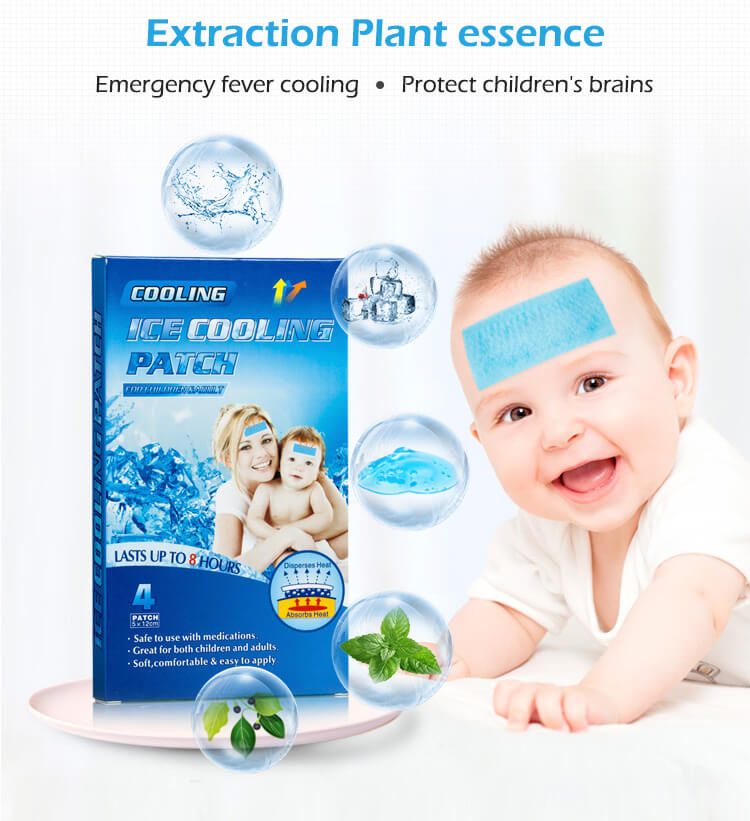Are Cooling Ice Patches from OEMs Environmentally Friendly?
The growing global demand for sustainable products has made eco-friendliness a top priority for many industries, including healthcare and wellness. As the popularity of cooling ice patches rises, questions about their environmental impact and sustainability are increasingly important. This article examines whether Cooling Ice Patches OEMs produce environmentally friendly options and how partnering with the right Cooling Ice Patches Manufacturer or Supplier can help brands align with green initiatives.

Understanding the Environmental Impact of Cooling Ice Patches
Cooling ice patches are primarily designed for fever relief, headache alleviation, and muscle pain. While highly effective, traditional patches often use materials and manufacturing processes that can harm the environment. Issues include:
- Non-Biodegradable Materials: Many cooling patches use synthetic polymers that take decades to decompose.
- Packaging Waste: Single-use plastic packaging contributes to landfill accumulation.
- Chemical Content: Certain adhesives or cooling agents may release harmful substances into the environment during disposal.
The Role of OEMs in Sustainability
OEMs play a critical role in addressing these challenges. A Cooling Ice Patches OEM can adopt environmentally friendly practices, ensuring products align with eco-conscious market demands. By working with an eco-focused Cooling Ice Patches Manufacturer, brands can offer greener options without compromising product efficacy.
How OEMs Are Making Cooling Ice Patches Environmentally Friendly
1. Use of Sustainable Materials
OEMs increasingly prioritize eco-friendly materials in their manufacturing processes:
- Biodegradable Polymers: Some Custom Cooling Ice Patches now feature biodegradable or compostable backing materials.
- Natural Ingredients: Replacing synthetic chemicals with plant-based cooling agents reduces environmental toxicity.
2. Eco-Friendly Packaging
Packaging innovation is a key area for sustainability improvements:
- Recyclable Packaging: OEMs can provide packaging made from fully recyclable materials.
- Minimalist Design: Reducing packaging size and material use minimizes waste.
- Compostable Alternatives: Advanced packaging options include biodegradable pouches or paper-based solutions.
3. Energy-Efficient Manufacturing
Top Cooling Ice Patches Manufacturers are investing in energy-efficient production methods, such as:
- Renewable Energy Sources: Using solar or wind power for factory operations.
- Waste Reduction Systems: Recycling waste materials generated during production.
4. Compliance with Green Standards
OEMs ensure compliance with environmental regulations such as:
- ISO 14001: Certification for effective environmental management systems.
- REACH and RoHS Standards: Regulating the use of harmful chemicals.
5. Customization for Eco-Conscious Brands
Many Private Label Cooling Ice Patches suppliers offer tailored solutions for brands that prioritize sustainability. These options include:
- Customizing formulations with natural cooling agents.
- Offering reusable cooling patches for repeat use.
- Developing eco-friendly branding and marketing strategies.
Benefits of Choosing Environmentally Friendly Cooling Ice Patches
1. Appeal to Eco-Conscious Consumers
Sustainability is a key purchasing factor for many customers. Offering eco-friendly Custom Cooling Ice Patches enhances brand reputation and customer loyalty.
2. Regulatory Compliance
Many markets, particularly in Europe and North America, have strict regulations on product sustainability. Environmentally friendly patches ensure compliance, avoiding penalties and enhancing marketability.
3. Competitive Advantage
Eco-friendly products differentiate your brand in a crowded market. By working with a sustainability-focused Cooling Ice Patches OEM, you gain an edge over competitors offering conventional products.
4. Reduced Environmental Impact
By choosing greener materials and processes, brands actively contribute to environmental conservation, reducing landfill waste and pollution.
Challenges in Making Cooling Ice Patches Environmentally Friendly
1. Higher Costs
Sustainable materials and processes can increase production costs. However, many consumers are willing to pay a premium for eco-friendly products.
2. Limited Availability
Not all Cooling Ice Patches Suppliers have adopted sustainable practices. Brands must carefully vet OEMs to ensure alignment with their values.
3. Balancing Performance and Sustainability
Eco-friendly materials may sometimes compromise the performance or longevity of patches. A skilled Cooling Ice Patches Manufacturer ensures that sustainability does not come at the expense of efficacy.
How to Choose an Eco-Friendly Cooling Ice Patches OEM
1. Research Their Practices
Look for OEMs with a proven track record of sustainability. Certifications like ISO 14001 and commitments to green initiatives are strong indicators.
2. Evaluate Their Materials
Ask about the materials used for patches and packaging. Prioritize suppliers that offer biodegradable, recyclable, or natural alternatives.
3. Assess Their Customization Capabilities
Work with a Private Label Cooling Ice Patches Supplier that can customize products to meet both your brand’s and the environment’s needs.
4. Check Energy Efficiency
Choose an OEM that uses renewable energy and follows waste-reduction practices during manufacturing.
5. Ensure Regulatory Compliance
Confirm that the OEM complies with environmental standards in your target markets.
FAQs About Environmentally Friendly Cooling Ice Patches
1. Are all cooling ice patches eco-friendly?
No, not all cooling ice patches are eco-friendly. However, many Cooling Ice Patches OEMs now offer sustainable options.
2. What makes cooling ice patches environmentally friendly?
Eco-friendly cooling patches use biodegradable materials, natural ingredients, recyclable packaging, and sustainable manufacturing processes.
3. Are eco-friendly patches as effective as traditional ones?
Yes, with advancements in materials and technology, many eco-friendly patches are just as effective as traditional ones.
4. How can I find an eco-friendly Cooling Ice Patches Manufacturer?
Look for manufacturers with green certifications, sustainable material options, and energy-efficient production processes.
5. Are eco-friendly patches more expensive?
Eco-friendly patches may have higher production costs, but they often yield better customer loyalty and market appeal.
Conclusion
Cooling ice patches can be environmentally friendly if produced by a sustainability-focused Cooling Ice Patches OEM. By choosing manufacturers that prioritize biodegradable materials, eco-friendly packaging, and energy-efficient practices, brands can reduce their environmental impact while appealing to eco-conscious consumers.
Partnering with the right Cooling Ice Patches Supplier ensures compliance with green standards, strengthens your brand’s reputation, and supports global sustainability efforts. While challenges such as higher costs exist, the long-term benefits for both the environment and your business far outweigh the drawbacks.
Embrace the future of sustainable healthcare products by exploring the customization options offered by environmentally conscious OEMs. Your brand—and the planet—will thank you.






